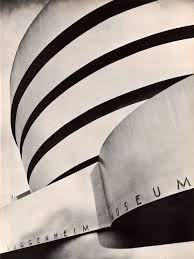Oct 12 2018 - Apr 23 2019
New York City, NY
This survey of Hilma af Klint’s work is the first major solo exhibition in the United States devoted to the artist, offering an unprecedented opportunity to experience af Klint’s long-underrecognized artistic achievements. The exhibition focuses on the artist’s breakthrough years, 1906–20, when she first began to produce nonobjective and stunningly imaginative paintings, creating a singular body of work that invites a reevaluation of modernism and its development. Offers the opportunity to experience af Klint’s work in depth and gain insight into her unique artistic practice and singular historic achievements.
When Hilma af Klint began creating radically abstract paintings in 1906, they were like little that had been seen before: bold, colorful, and untethered from any recognizable reference to the physical world. It was years before Vasily Kandinsky, Kazimir Malevich, Piet Mondrian, and others would take similar strides to rid their own artwork of representational content. Yet while many of her better-known contemporaries published manifestos and exhibited widely, af Klint kept her groundbreaking paintings largely private. She rarely exhibited them and, convinced the world was not yet ready to understand her work, stipulated that it not be shown for twenty years following her death. Ultimately, her work was all but unseen until 1986, and only over the subsequent three decades have her paintings and works on paper begun to receive serious attention.
Af Klint was born in Stockholm in 1862 and went on to study at the city’s Royal Academy of Fine Arts, graduating with honors in 1887. She soon established herself as a respected painter in Stockholm, exhibiting deftly rendered figurative paintings and serving briefly as secretary of the Association of Swedish Women Artists. During these years she also became deeply involved in spiritualism and Theosophy. These modes of spiritual engagement were widely popular across Europe and the United States—especially in literary and artistic circles—as people sought to reconcile long-held religious beliefs with scientific advances and a new awareness of the global plurality of religions.
Af Klint’s first major group of largely nonobjective work, The Paintings for the Temple, grew directly out of those belief systems. Produced between 1906 and 1915, the paintings were generated in part through af Klint’s spiritualist practice as a medium and reflect an effort to articulate mystical views of reality. Stylistically, they are strikingly diverse, incorporating both biomorphic and geometric forms, expansive and intimate scales, and maximalist and reductivist approaches to composition and color. She imagined installing these works in a spiral temple, though this plan never came to fruition. In the years after she completed The Paintings for the Temple, af Klint continued to push the bounds of her new abstract vocabulary, as she experimented with form, theme, and seriality, creating some of her most incisive work.
In conjunction with Hilma af Klint: Paintings for the Future, the museum presents R. H. Quaytman: + ×, Chapter 34, featuring a new group of paintings by contemporary artist R. H. Quaytman, whose abiding interest in af Klint extends back to 1989, when Quaytman organized an exhibition on the Swedish artist at New York’s P.S.1 Contemporary Art Center.
Credit: Exhibition overview from museum website.
Image: Hilma Af Klint, Group IV, The Ten Largest, No 3, Youth (1907). From Untitled Series (detail) Tempera on paper, mounted on canvas, 321 x 240 cm. The Hilma af Klint Foundation, Photo: Albin Dahlstrom, Moderna Museet, Stockholm

Select Hilma af Klint: Paintings for the Future to learn more, or to place this book in your Amazon shopping cart. Your Amazon purchase through this link generates a small commission that will help to fund the ArtGeek.art search engine.
Exhibition Venues & Dates
Oct 12 2018 - Apr 23 2019
New York City, NY

